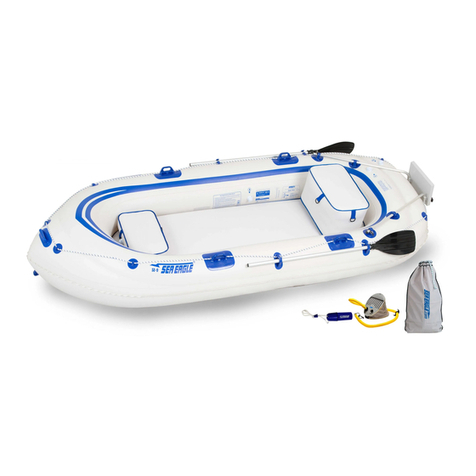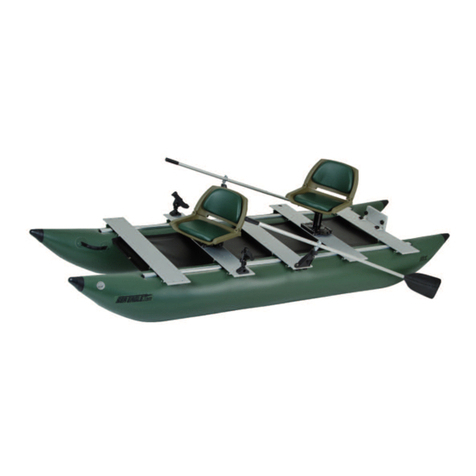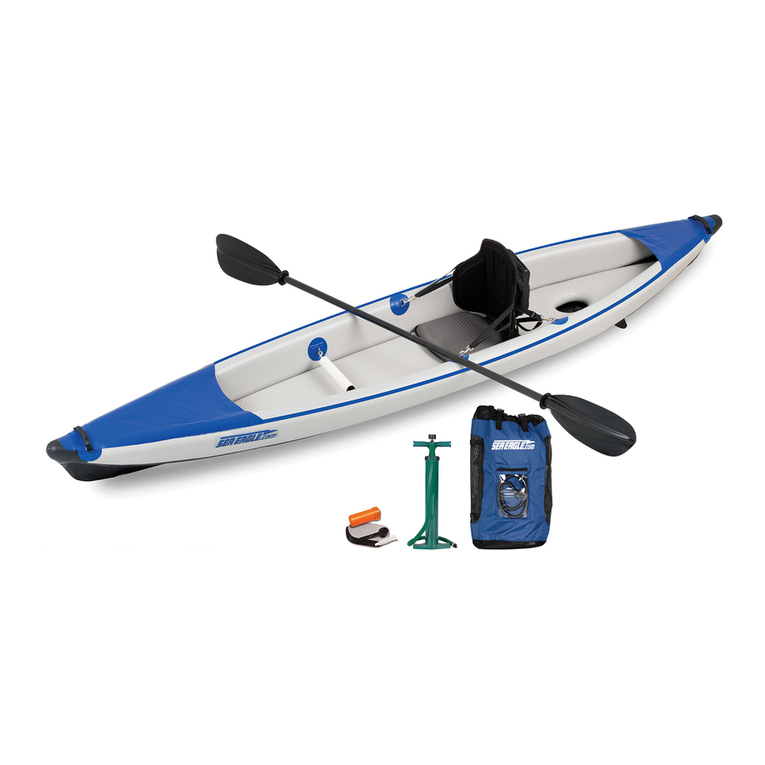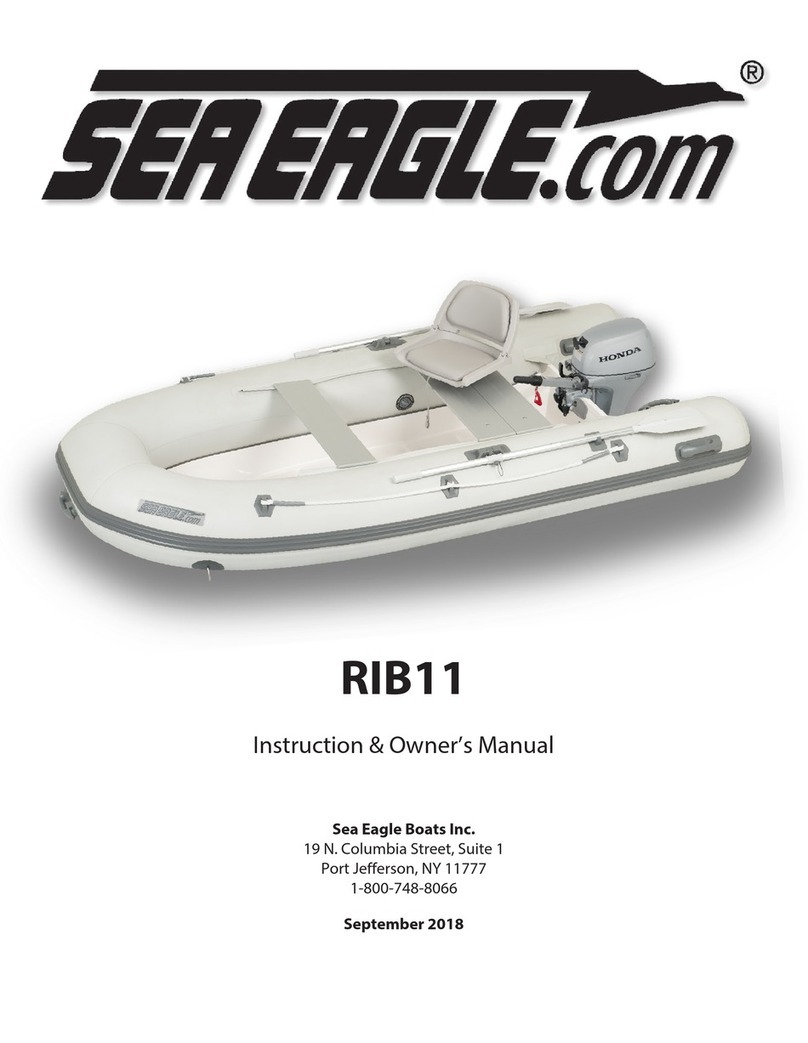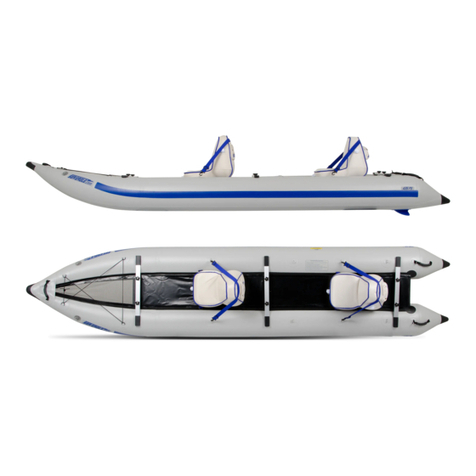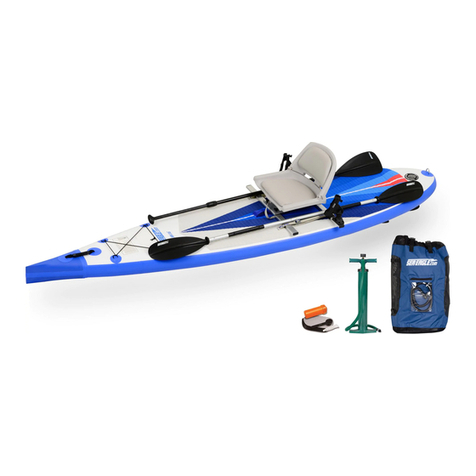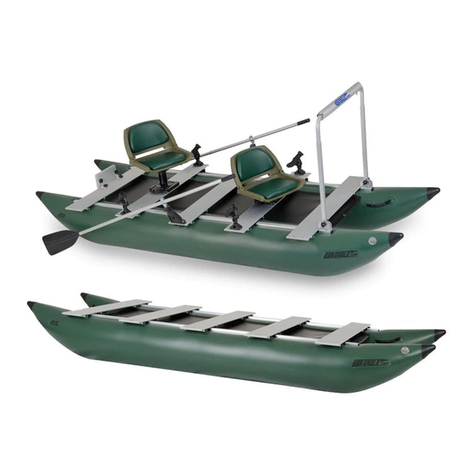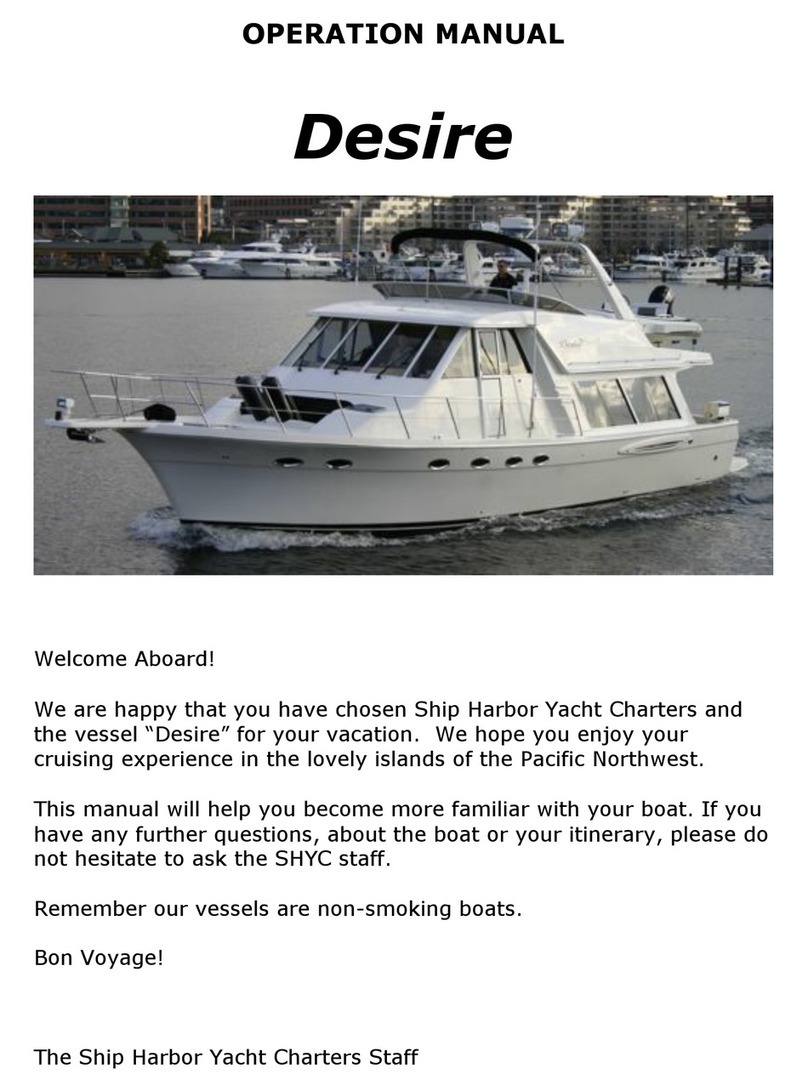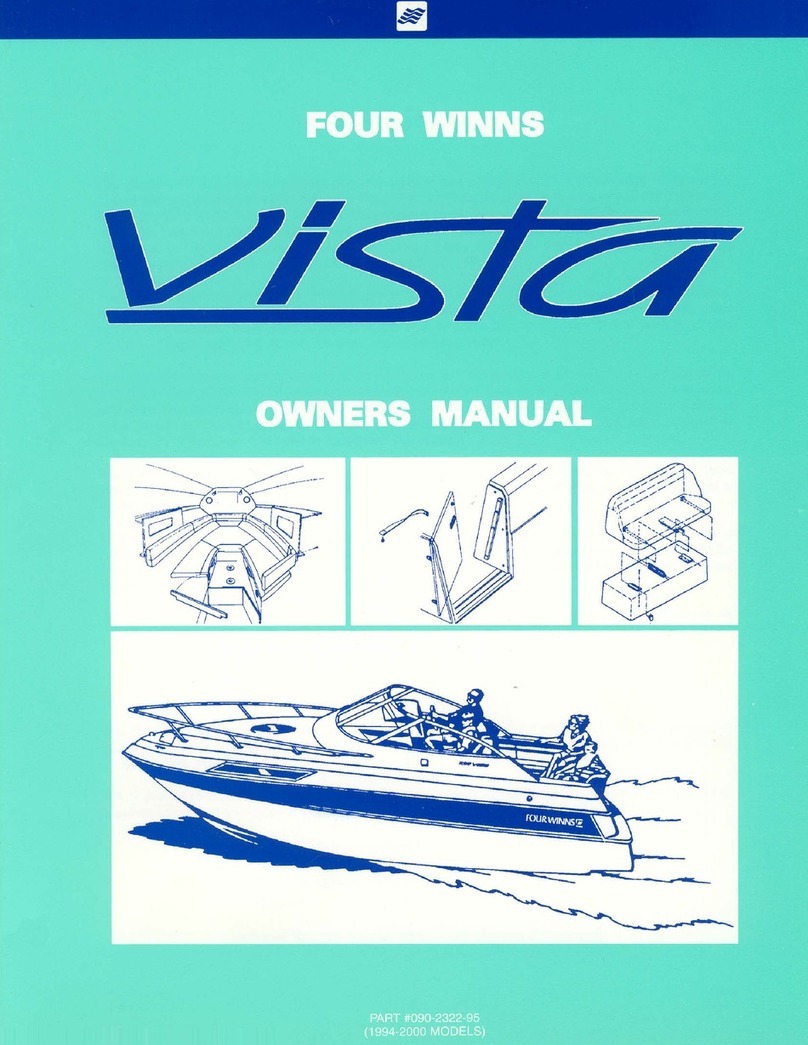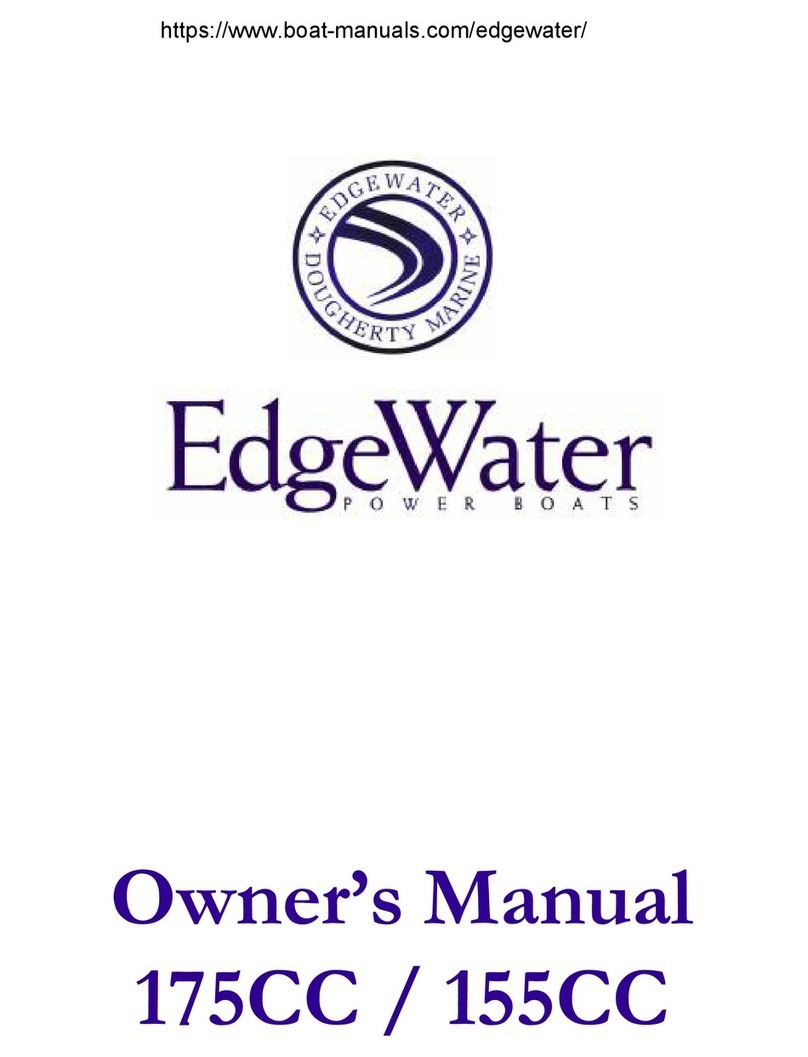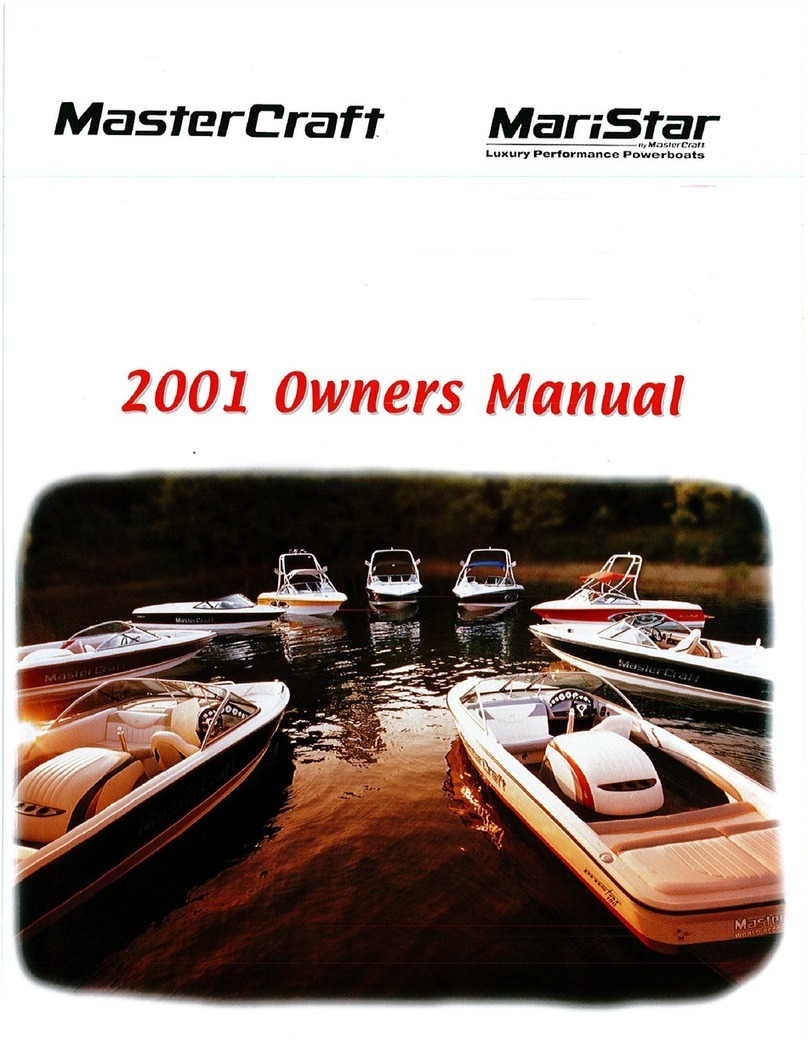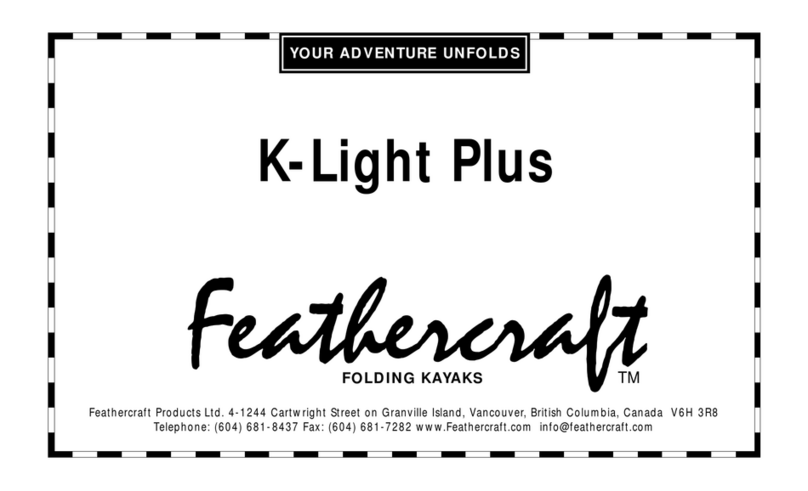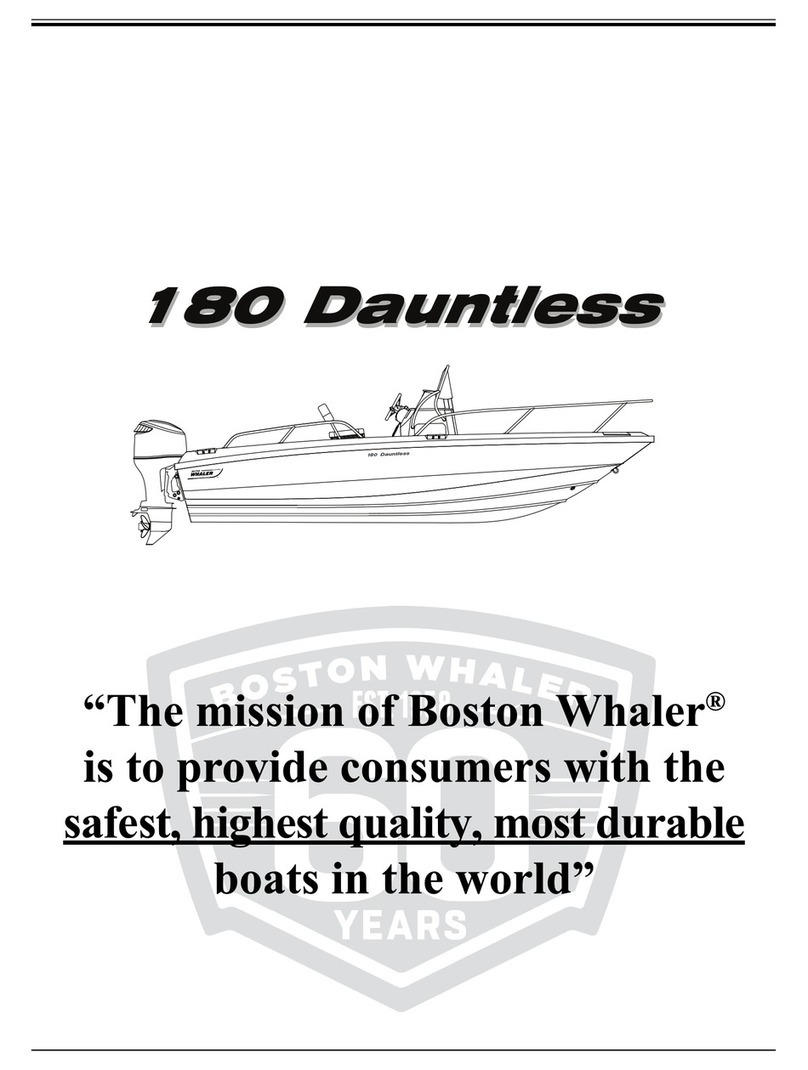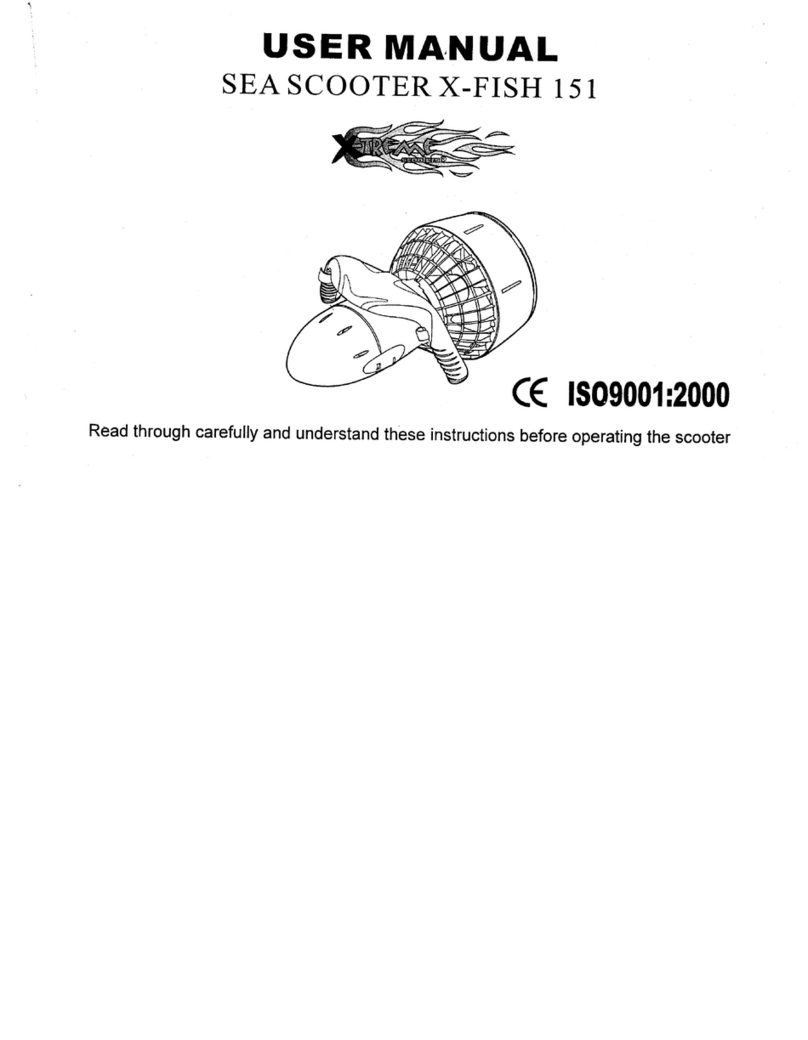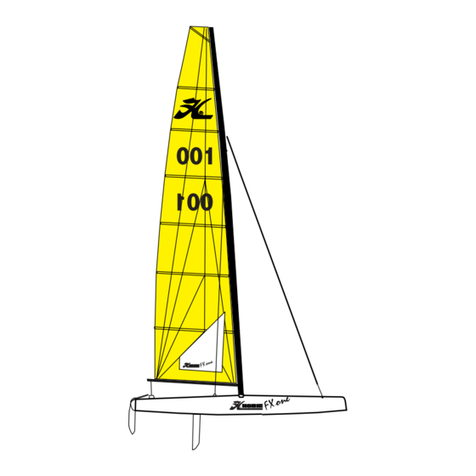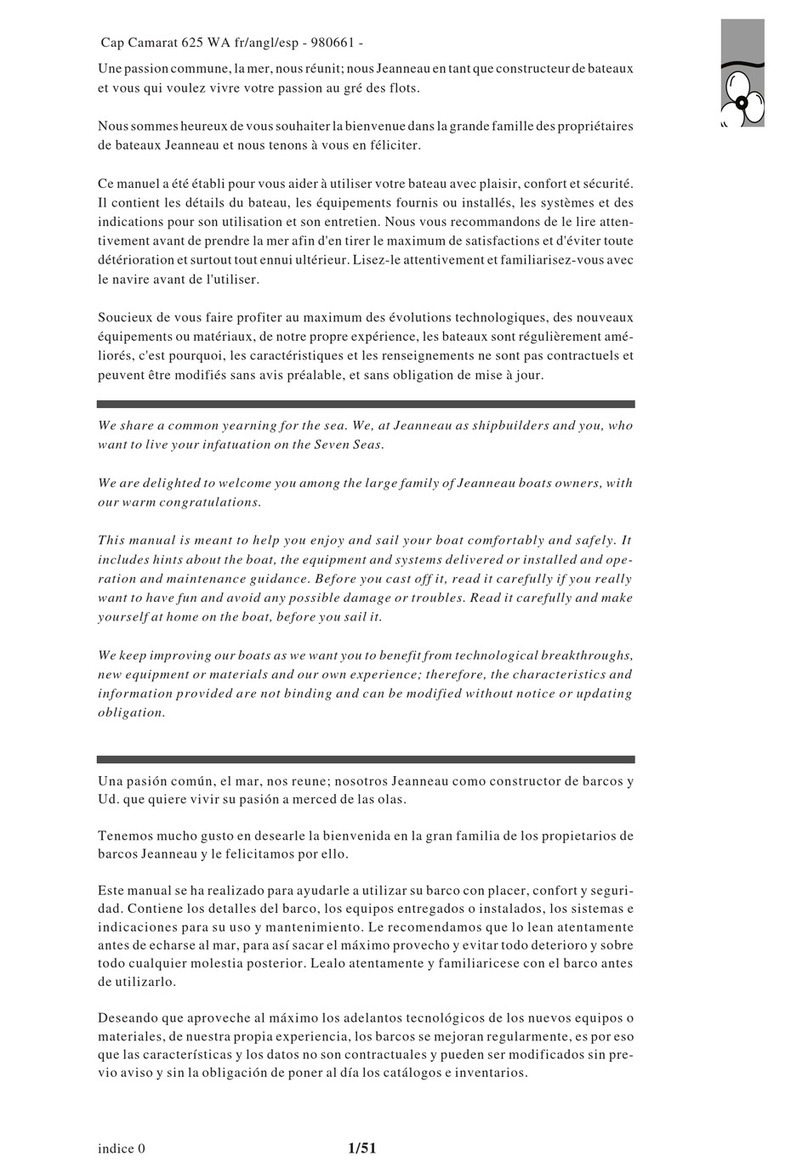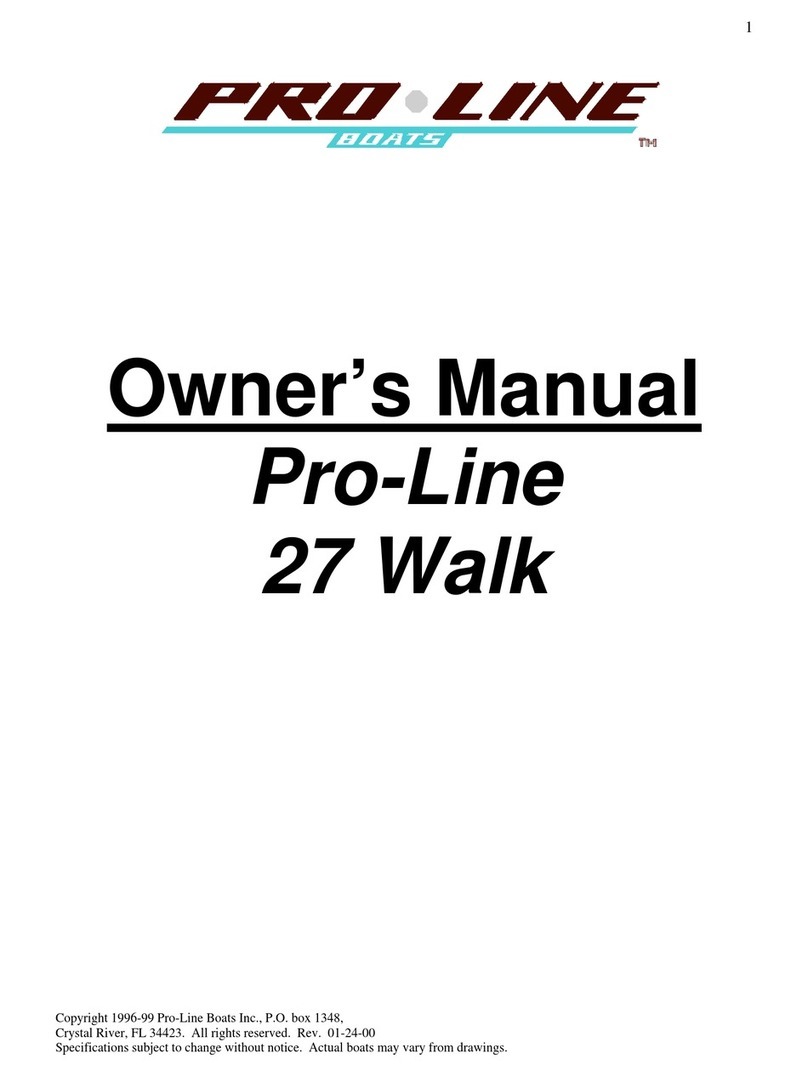
Safety
Safety
Safety Equipment
The type of water conditions you are on should determine
the type of safety equipment that you should have on
board. For all types of boating we strongly recommend that
every passenger wear a USCG approved PFD (personal
flotation device) like a life vest. n most places this is a re-
quirement by law, but from our point of view it is also an ex-
ercise of good judgment to have a PFD for all passengers
Important Safety Items
Drinking Water & Snacks: Kayaking is a physical activity
that can work up both a thirst and a sweat and especially
on a hot or warm day it is a good idea to have drinking
water readily available to you to prevent dehydration.
Bring a good amount of water for all passengers.
Extra Clothes/Layers: You never know when the weather
can change and it’s a good idea to come prepared with
extra clothing. f you have a dry (waterproof) bag than we
recommend storing them inside so they’re not damp in
case of emergency.
First Aid-Kit: The contents of the kit may vary depending
upon your preferences, but make sure to carry a kit that re-
flects the possible dangers for the conditions you are in.
Manual Pump/Repair Kit: Although our boats are both
durable and rugged, it may be possible that you need to
make a repair while on the water in which case you’ll need
the repair kit and a manual pump to re-inflate the boat. f
this is your first repair, you may also want to bring this in-
struction manual with you.
Sun/Rain Protection: A hat can protect both your face and
head from the rain or sun. You may also want to carry sun-
screen with you as both the sun and the sun’s reflection
from the water can do serious damage to your skin. f you
are out for prolonged periods of time you may need to
reapply sunscreen as needed.
Whistle: Having a whistle readily available to you in case
of emergency is a great way to attract the attention of oth-
ers if assistance is needed.
Always tell someone where you are going to be boating
and what time you plan to return. Keep a cell phone in a
waterproof container that will float if it falls in the water.
A great source of background information is Cecil Kuhne’s
nflatable Kayaking ( SBN 0-8117-2810-2).
We strongly recommend this and other related reading ma-
terials to better educate yourself with kayaking.
Operating Your Sea Eagle
Operating Your Sea Eagle
There are a few basic things you should consider before
venturing out in your Sea Eagle RazorLite.
BALANCE: A high performance kayak that is built for the
adventurer, the Sea Eagle RazorLite is narrower and faster
than other inflatable kayaks. We recommend taking a
minute before you start paddling to get yourself balanced,
as once you start paddling the RazorLite will move quickly
and you may not have time to adjust to the yaw of the
kayak. Yaw is the side to side motion that is caused by the
torque from paddling side to side and causes the boat to
move in a zigzag pattern.
SKEGS: You will need to install the skeg underneath the
stern of the kayak as it is ideal for flat-water environments
like bays, lakes and streams. THE RAZORLITE IS NOT
INTENDED FOR WHITEWATER USE. The skeg can be
slid in and out of the base without deflating the boat. Pad-
dling on flat-water without a skeg is difficult and using the
skeg will give you greater tracking by reducing the yaw.
DRAIN VALVES: Tighten the drain valves on your Razor-
Lite, they are only intended for u e when your kayak i
not in the water. Leaving the drain valves open on your
RazorLite will only let water into the kayak which will make
it heavy and sluggish to maneuver.
PADDLING: For the most effective paddling, sit up straight
and hold the paddle out in front of you with hands out wide
enough that the forearms are perpendicular to the shaft
(like a push-up position).
Most of the power should come from your torso. Your arms
contribute, but too much reliance on your arms will cause
you to tire quickly. For good balance, especially in heavy
seas, keep your head up and eyes focused on the horizon.
Start paddling gently and smoothly. As the kayak picks up
speed it will maintain a truer heading. f you dig in hard at
first you will create more yaw.
Course corrections can be made by easing up or bearing
down on one side or the other. Gentile turns can be made
by sweeping water behind the boat. Sharp turns can be
made by using the paddle as a brake on one side. Breaking
will allow you to maneuver sharp bends in a stream, for ex-
ample, but kills forward speed.
SAILING: Our Sea Eagle QuikSail (sold separately) is a
great accessory and can turn your RazorLite kayak into a
one-of-a-kind sailing vessel that can be setup in less than a
minute. Kayak sailing enhances the paddling experience
and is great for touring and exploring. When sailing, it is
recommended to paddle up wind of your starting point and
to sail downwind for the final leg of your journey. Using the
QuikSail with your RazorLite will require good balance, so
make sure you are comfortable paddling first before using
the QuikSail.
2


















